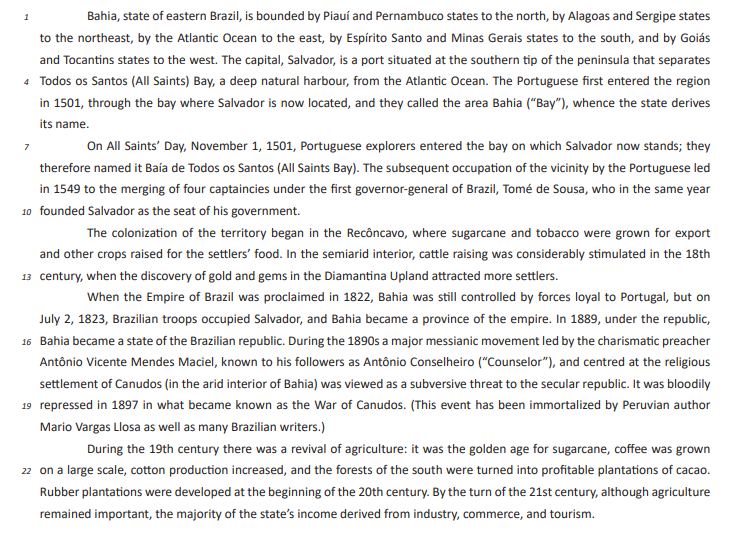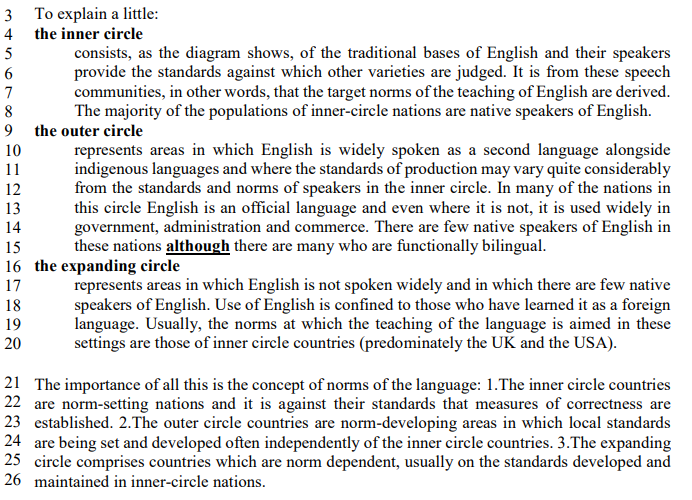Questões de Concurso
Sobre advérbios e conjunções | adverbs and conjunctions em inglês
Foram encontradas 581 questões
Julgue o item que se segue.
In the sentence “I didn’t go to work because I wasn’t
feeling very well”, the conjunction connects the main
clause to the subordinate clause.
Julgue o item que se segue.
In the sentence “She wanted to stay up late, but she had an early morning meeting to attend”, the conjunction connects the main clause to the subordinate clause.
Julgue o item que se segue.
The sentence “She often goes to New Jersey on vacation”
contains an adverb of frequency.
Julgue o item que se segue.
The conjunction in “The secretary took care of my
appointments whereas I was away from the office” is
correct.
Julgue o item que se segue.
The words rarely, carefully, recently, lovely, and quickly are
all adverbs.
Julgue o item que se segue.
The position of the conjunction at the end of the sentence
in “It’s nice, though” is correct, as it means “however”.
Julgue o item subsequente.
Coordinated clauses are independent clauses of equal
syntactic weight that are linked by coordinating
conjunctions such as “and,” “but,” or “or.” These
conjunctions facilitate the creation of compound
sentences, allowing for the expression of related ideas
with balance and clarity. Understanding the use of
coordinating conjunctions enhances the construction of
cohesive written and spoken communication.
Julgue o item subsequente.
Adverbs of manner, such as “quickly” or “carefully,”
provide information about how an action is performed.
Understanding the placement of these adverbs in a
sentence is crucial for conveying precise details about the
manner in which an activity occurs.
Julgue o item subsequente.
Subordinating conjunctions, such as “although,”
“because,” and “while,” introduce subordinate clauses that
depend on main clauses for context and meaning.
Proficiency in the use of subordinating conjunctions
allows for the creation of complex sentence structures,
contributing to nuanced and detailed expression in
American English. Recognizing the relationships
established by these conjunctions aids in the construction
of well-crafted and cohesive written and spoken
communication.
Julgue o item subsequente.
Adverbs can function as sentence modifiers, providing
additional information about the speaker's attitude,
certainty, or the likelihood of an event. Adverbs in this
context, such as “fortunately” or “surprisingly,” play a vital
role in conveying the speaker's perspective in American
English.
Julgue o item subsequente.
Adverbs of frequency, like “always” or “rarely,” indicate
how often an action takes place. Proper use of these
adverbs contributes to accurate communication, allowing
speakers to express routines, habits, or the frequency of
specific events in American English.
Julgue o item subsequente.
Coordinating conjunctions, including “and,” “but,” and “or,”
serve to connect elements of equal grammatical rank
within a sentence. These conjunctions facilitate the
formation of compound structures, enabling a concise
and organized expression of ideas in American English.
Understanding their application enhances syntactical
clarity and coherence in written and spoken
communication.
Julgue o item subsequente.
Correlative conjunctions, exemplified by pairs like
“either...or” and “neither...nor,” work together to connect
grammatically parallel elements. The correct usage of
correlative conjunctions ensures a balanced and
harmonious structure within sentences, promoting
effective communication in American English.
Understanding the interplay between these paired
conjunctions facilitates the construction of well-formed
and logically connected expressions in both written and
spoken contexts.


Internet: <www.britannica.com> (with adaptations).
The adverb “bloodily” (line 18) follows the same spelling rule of the adverbs nicely, simply and easily.

Internet: <www.britannica.com> (with adaptations).
The word “but” in “Bahia was still controlled by forces loyal to Portugal, but on July 2, 1823, Brazilian troops occupied Salvador, and Bahia became a province of the empire.” (lines 14 and 15) can be correctly replaced by the word however.
TEXT II – Tema: Variação linguística no ensino-aprendizagem de inglês
INTERNATIONAL VARIETIES OF ENGLISH
1 The most familiar way to classify the varieties of English around the world was developed by
2 Kachru (1985) and looks like this:


(Available from: https://www.eltconcourse.com/training/common/variety.html Accessed on July 5 , 2023)